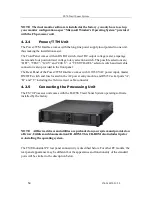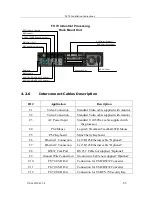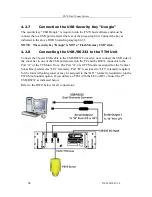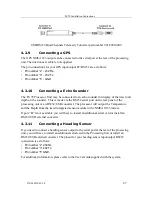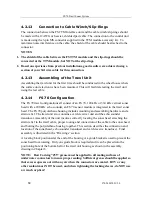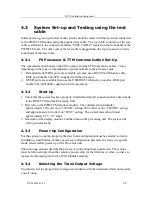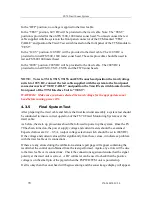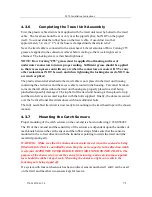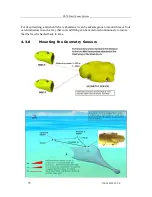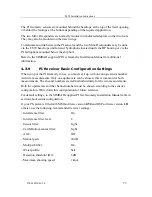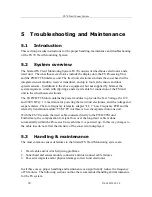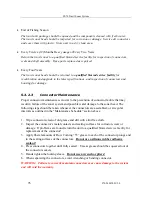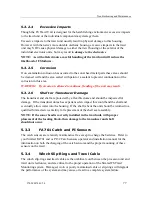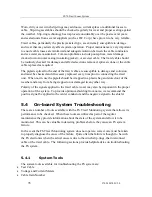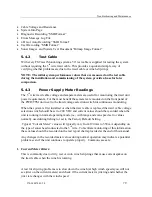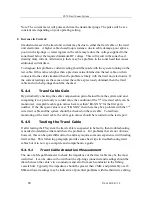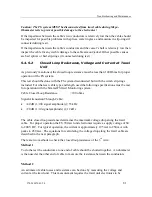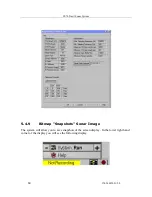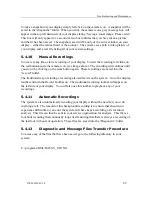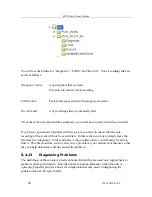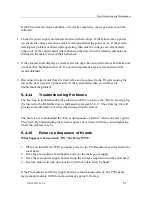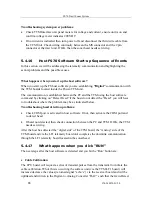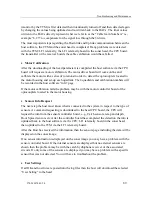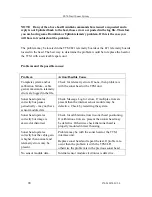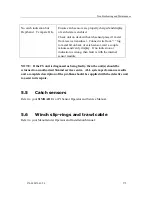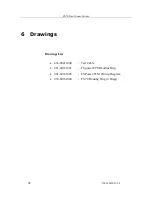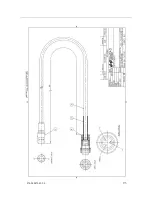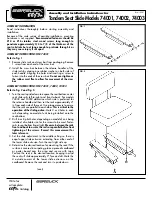
FS70 Trawl Sonar System
78
974-24007001/5.0
Worn, dirty or wet winch slip-rings may add noise, current spikes or additional losses to
cable. Slip-ring assemblies should be checked regularly for wear and proper sealing against
the weather. Slip-ring technology has improved considerably over the past several years
and sealed units from several suppliers (such as IEC Corp.) have proven to be very reliable.
Trawl cables, particularly the plastic jacketed type, are extremely susceptible to damage
and wear that may adversely affect system operation. Proper maintenance is very important
to ensure cable losses are minimized and adequate isolation between the cable conductors
and sea water are maintained. Common problems include poor splices, water damage,
cracked or worn outer casing (insulating jacket), or severed cable. The trawl cable should
be routinely checked for damage and affected sections removed, splices redone or the entire
cable replaced as required.
The pigtails spliced to the end of the trawl cable are susceptible to damage and corrosion
and must be checked and if necessary replaced every time prior to connecting the trawl
unit. When not in use the pigtail should be wrapped in a plastic bag and stored out of the
weather and away from being stepped on or damaged in any other way.
Polarity of the signals applied to the trawl cable (coax) may also be important in the proper
operation of the system. To provide optimum shielding from noise, we recommend the
positive signal be applied to the center conductor and the negative signal to the shield.
5.4
On-board System Troubleshooting
There are a number of tools available with the FS Trawl Monitoring system that allows its
performance to be checked. When these tools are utilized as part of the regular
maintenance they provide information about the state of the system and allow it to be
monitored. This can be valuable in detecting problems before they cause an FS system
failure.
In the event the FS Trawl Monitoring system does not operate, correct care must be taken
to properly diagnose the cause of the failure. Quite often the failure is thought to be with
the FS electronics when the actual cause is due to the winch slip-rings, the interconnect
cable or the trawl cable. The following sections provide helpful advice on troubleshooting
the FS system.
5.4.1
System Tools
The system tools available for troubleshooting the FS system are:
Test Cable
Voltage and Current Meters
Cable Gain Number
Summary of Contents for FS70 -
Page 2: ......
Page 3: ...974 24007001 5 0 I 974 24007001 5 0 FS70 Trawl Sonar System Operator manual...
Page 44: ...FS70 Trawl Sonar System 34 974 24007001 5 0 Click button on the recording tool bar...
Page 56: ...FS70 Trawl Sonar System 46 974 24007001 5 0 3 2 7 7 PI 40 kHz Channel Sensors Setup...
Page 103: ...974 24007001 5 0 93...
Page 104: ...FS70 Trawl Sonar System 94 974 24007001 5 0...
Page 105: ...974 24007001 5 0 95...
Page 106: ...FS70 Trawl Sonar System 96 974 24007001 5 0...
Page 107: ...974 24007001 5 0 97...
Page 108: ...FS70 Trawl Sonar System 98 974 24007001 5 0...
Page 109: ...974 24007001 5 0 99...
Page 110: ...FS70 Trawl Sonar System 100 974 24007001 5 0 This page is left intentionally blank...
Page 112: ...FS70 Trawl Sonar System 102 974 24007001 5 0 This page is left intentionally blank...
Page 113: ...2010 Kongsberg Mesotech...
Page 114: ...SIMRAD...

